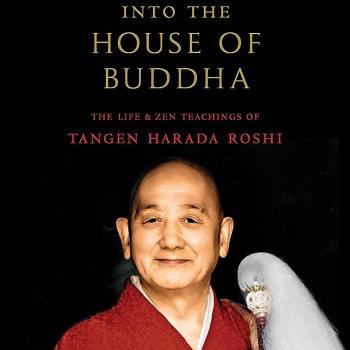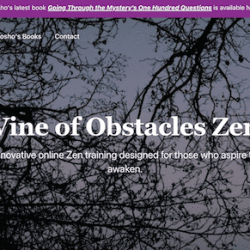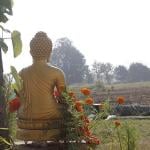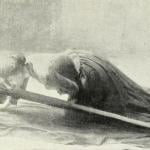 What is the role of words in Zen practice?
What is the role of words in Zen practice?
It has become a cliche in American Zen that “words can’t reach it.” For example, when asked, “What is mu?” beginning mu students will often utter such a defense.
So I sometimes continue, “Do words have buddha nature? Or is buddha nature somewhere above and beyond stinky, lowly words? Are words even further from the buddha nature than the mu dog?”
Enter Dr. Steven Heine’s new book, Like Cats and Dogs: Contesting the Mu Koan in Zen Buddhism.
My short-cut review is that he’s done it again – produced a fine piece of scholarship on a really important topic for Zen practice, provided many juicy historical tidbits and context, a fine sampling of original sources (this time including some material from the Korean tradition – often overlooked in Zen studies, it seems to me) some translated here for the first time, and advanced a provocative revisionist theory of the history of Zen while also rolling some inspired Dogen study into the mix.
But if you’re working on the mu koan and concerned that you might get the answer by reading this book, no worries. In terms of koan work, Heine, like Buddhist scholars generally, ain’t nothing but a hound dog barking up the wrong tree. The whole bunch is good at providing context for koan work but have no buddha nature (my first draft title was “Do Buddhist Scholars Have Buddha Nature?”) and are lacking when it comes to pointing to the koan point. That isn’t, after all, their specialty. The koan bone can only be seen through what Dogen calls “identity action” – becoming the koan (“be the bone”) itself through one-pointed introspection.
I’ve gnawed that rotting bone before (see “Satisfying Hunger with Koan: A Critical Review of Foulk’s Scholarly Perspective”), so I’ll leave it at that.
How does Heine’s work here support dharma inquiry?
The main point of the book seems to be that for the last 1,000 years, there have been two main styles of Zen practice and teaching – wato (key phrase) and katto (entangling vines).
The wato approach (sometimes translated as “head word”), “…captures in a single word [mu] the heart of Zen functioning as an ineffable transmission that eliminates cogitation and rhetoric at the root by not relying on any particular manner of deliberation or phrasing.” This is also called a bilateral approach because it presents itself as distinct from katto.
The katto (entangling vines) approach is to fully enter the play of words as the expression of the ineffable. In this approach there’s also multiple layers of rich meaning, thick interpretation, and creativity. That’s Dogen’s approach and a bunch of other important teachers like Daito, Hongzhi, and Yuanwu. This is called a multilateral approach because it throws everything into the mix. It’s also referred to as panoramic.
For example, “How is your hand like a Buddha’s hand?” In the wato method, the focus is just on this question. Dogen, in his katto-ish way, brings up this koan and then says he also asks, “How is your hand like your hand?” And “How is Buddha’s hand like Buddha’s hand?”
Wato was invented by Dahui (1089–1163), Yuanwu’s successor. It seems that Zen had become entangled in beautiful, powerful, panoramic word play – katto – and Dahui, even though his own teacher, Yuanwu, was fantastic at it (or perhaps because his teacher was fantastic at it), reacted against the entangling vine way, even to the point of burning the wood blocks for the Blue Cliff Record – his master’s master work.
My explanation for Dahui’s flip is that he was, in my professional opinion, an asshole. Really. Certifiable. That’s my theory, anyway. And an enlightened asshole at that who wantonly spoke his mind. So he was exiled from the big posh monasteries for being an asshole and he had to find a way to work with lay people, mostly really well educated lay people who were already attached to fine verbal expression (anything here sound familiar?).
Because excessive verbal erudition didn’t seem to help people break through, Dahui invented the wato method. He found that by focusing on just the key word, mostly mu, many more people realized what is to be realized than through study of multiple levels of commentary and counter commentary.
Dahui’s key-word innovation swept through the Zen world and was carried to Korea and Japan so that mu realization is the essence of practice 1,000 years later. Well, except for that ragged, erudite bunch who call themselves Soto Zen practitioners of the last couple hundred years or so.
“The shift took place so quickly,” says Heine, “and was then affirmed so radically that historiographical accounts of the period easily get blurred or distorted.”
Heine puts a lot of emphasis to make his point on what he calls the Emphatic Mu (wato) presentation of the Gateless Barrier, where Zhaozhou is asked if a dog has buddha nature and he says, “No” (or “wu” in Chinese; “mu” in Japanese; and “bu” in Korean). This is contrasted with the so-called Dual Version (katto) of the Book of Serenity which has Zhaozhou saying both no and yes or yes and no, depending on the version. By the way, “Fighting Over and Gnawing at Rotting Bones – Crunch! Snap! Howl! Bark!” is Heine’s translation of Wanson’s comment to the poem by Hongzhi on Zhaozhou’s dual dog in the Book of Serenity (see how it can get kinda exhausting?).
Heine also presents a convincing case that if anybody ever had the mu dialogue about the buddha nature, it wasn’t Zhaozhou. The whole mess in either version wasn’t attributed to him for a couple hundred years, doesn’t appear in the earliest records of Zhaozhou, etc. This is an interesting historical point that to credential the mu koan, somebody put it in Zhaozhou’s mouth, but for koan work it totally doesn’t matter.
The monk could have been asking Daffy Duck and Daffy could have said “No” or “Yes” or “Huh?” Although it might not have sparked the mu explosion in quite the same way because people would be giggling too much to focus.
Now like most “there’s two types of people” theories, Heine goes too far with wato and katto. Maybe it was once a telling difference but as time has past, each approach has eaten the other. That seems to happen a lot.
In the koan curriculum, for example, the student starts with mu as a key word. It is important to shut up for once. Then in subsequent koans – hundreds of them – the mu realization is applied in multiple settings, across time and space, including dealing with the Dual Version. There are also checking questions for almost all the koans that tease out a multitude of perspectives and presentations. Now that’s pretty darn much like multilateral entanglement.
On the other hand, Dogen, a katto type, also uses the key word approach. He just uses lots of them. In the example above, for double example, Dogen isn’t done playing when he hears how your hand is like a Buddha’s hand. He wants to know how your hand is like your hand, etc.
What about me? In the work I do with people, I pull in that ol’ dog Dogen both in the Gateless Barrier as a source for additional checking questions and also by teasing out the koans in Genjokoan and other Shobogenzo fascicles and working with them in a wato-katto way.
Like Heine says, “…the wato and katto standpoints in the end tend to agree on the need to maintain a lofty silence or – more crudely put – to shut their yaps for a change. Otherwise, that ol’ dog of a special transmission outside the scriptures just won’t hunt.”











